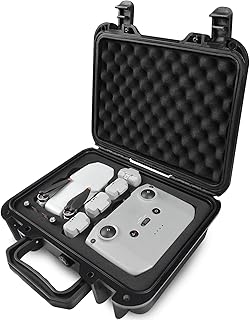If you are looking for information about the history and evolution of drones in general, I can provide you with some details.
Early Drones:
* 1917: The first unmanned aerial vehicles (UAVs) were developed during World War I, primarily for reconnaissance and bombing missions. These early drones were controlled by radio and were relatively simple in design.
* 1930s-1940s: During World War II, drones saw further development and were used for various purposes, including target practice, anti-ship attacks, and reconnaissance.
* 1950s-1960s: The Cold War spurred the development of more sophisticated drones for reconnaissance and surveillance. These drones were often equipped with cameras and other sensors.
The Modern Era of Drones:
* 1970s-1980s: The use of drones continued to grow, with applications in both military and civilian sectors. Drones were increasingly used for research, environmental monitoring, and disaster relief.
* 1990s: The introduction of GPS technology and advanced imaging systems revolutionized drone capabilities, making them more precise and versatile.
* 2000s: The development of smaller, more affordable drones and the rise of commercial drone companies led to a boom in drone use. Drones became increasingly popular for aerial photography, videography, and other applications.
Key Advancements in Drone Technology:
* Increased Autonomy: Modern drones are capable of operating autonomously, using sophisticated algorithms and sensors to navigate and complete tasks.
* Improved Battery Life: Battery technology has significantly improved, extending flight times and allowing drones to operate for longer periods.
* Enhanced Imaging and Sensing Capabilities: Drones are now equipped with high-resolution cameras, thermal imaging sensors, LiDAR, and other advanced technology to gather data and monitor various environments.
* Integration with Artificial Intelligence: The use of AI is allowing drones to perform more complex tasks, such as object recognition, path planning, and decision-making.
The Future of Drones:
The future of drones is bright, with continued advancements in technology and the expansion of applications. Drones are expected to play a significant role in:
* Delivery and Logistics: Drones are increasingly being used for package delivery, medical supplies, and other transportation tasks.
* Agriculture: Drones are used for crop monitoring, precision spraying, and data collection in agriculture.
* Law Enforcement and Security: Drones are used for surveillance, search and rescue, and other law enforcement activities.
* Infrastructure Inspection: Drones are used to inspect bridges, power lines, and other infrastructure for safety and maintenance purposes.
If you're interested in a particular aspect of drone technology or applications, please feel free to ask, and I'll do my best to provide you with relevant information.


